Edible flowers turn every dish into a real flower dream. You can find out which flowers are edible and how best to use them here.
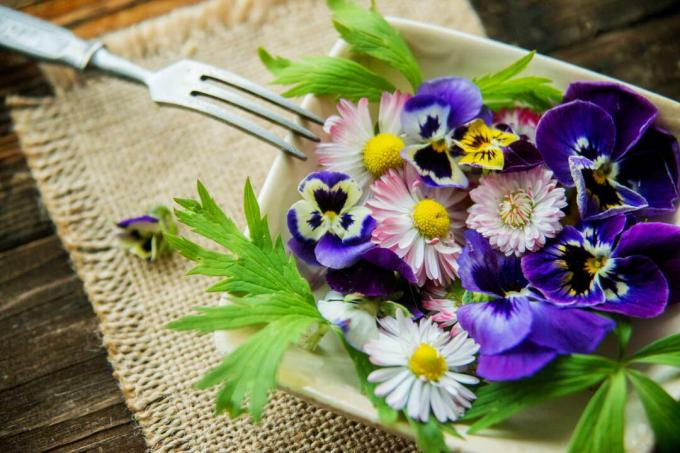
Flowers are an absolute must for many gardeners. But what if the colorful plants could do more than just look pretty? In fact, there is a whole range of flowers that not only beguile the eyes and nose, but also flatter the palate. Whether as a salad, in the main course or as a dessert - flowers can be used universally and refine almost every dish. But the many flowers are not only a great addition in culinary terms, the colorful leaves also visually enhance every dish. Here we tell you which flowers are edible and for which dishes they are best suited.
contents
-
The best edible flowers
- 1. cowslip
- 2. phlox
- 3. cornflower
- 4. forget Me Not
- 5. sage
- 6. marigolds
- 7. jasmine
- 8. wild garlic
- 9. Apple
- 10. lavender
- 11. sunflower
- 12. roses
- 13. Nasturtium
- 14. dandelion
- 15. daylilies
- 16. chives
- 17. zucchini
- 18. borage
- 19. Ice Begonia
- 20. violet
- Edible flowers: processing and recipe ideas
The best edible flowers
1. cowslip
Cowslip enchants with its fine fragrance and beautiful blossoms (Primula veris) every. At the same time, the blossoms of the flower are a real treat for the palate with their slightly sweet taste. However, cowslip should only be consumed in moderation, as it can contain stomach-irritating saponins. You should also refrain from picking flowers in the forest: Since the cowslip is a nature reserve, it is forbidden to collect it.

2. phlox
With its numerous flowers, the phlox (phlox) especially as a plant for flourishing fences and walls used - but the plant does not look bad in the kitchen either. The intensively scented flowers of the herbaceous phlox (Phlox paniculata) are characterized by a strong aroma and go well with various dishes.
3. cornflower
Radiant blue and beautiful – the cornflower (Centaurea cyanus) is considered by many to be one of the most spectacular wildflowers. But the bright flowers are not only a breathtaking sight in the garden, the cornflower is also a great eye-catcher as a decoration for food. In terms of taste, the flowers are not that exciting: Slightly spicy and slightly bitter, the cornflower is not a delicacy, but it is still beautiful to look at.
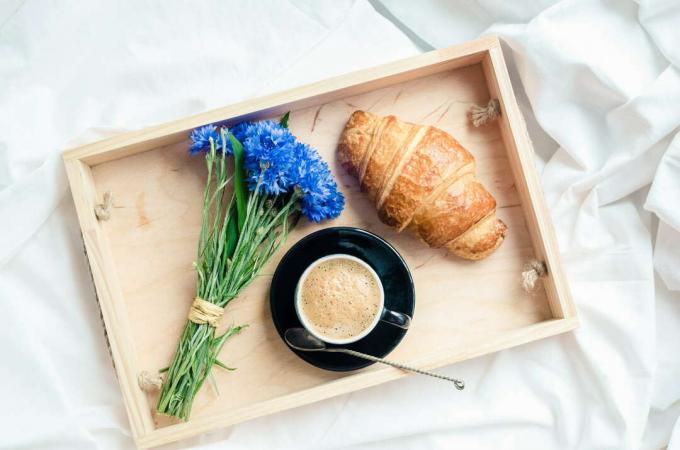
4. forget Me Not
At the forget Me Not (Myosotis sylvatica) the name says it all: Once you have seen the beautiful plant with its large number of small, bright blue flowers, this sight will remain in your memory for a long time. But this herald of spring is not only used in the garden: the small flowers are also perfect as a decoration for soups and salads. Although the plant is characterized by a low taste of its own, it definitely transforms your food into a unique feast for the eyes.
5. sage
sage (Salvia) can be found in almost every herb garden, but few realize just how much the plant actually has to offer hat: In fact, not only the leaves of the plant are edible, the flowers are also excellent use. Depending on sage variety the taste of the flower can vary greatly from bitter to sour or even slightly sweet.
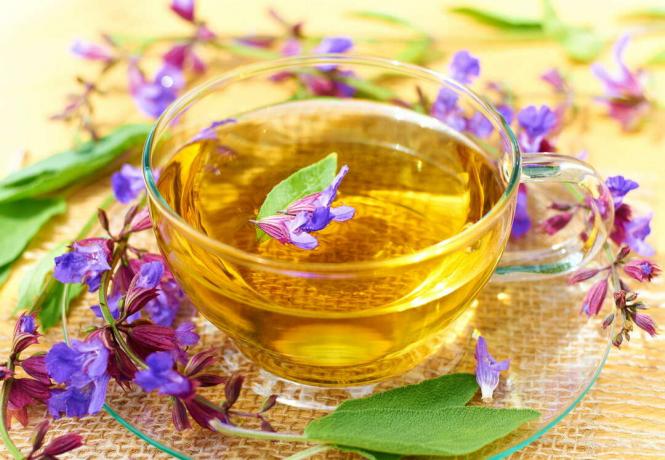
6. marigolds
The radiantly beautiful marigold (Calendula officinalis) is a welcome guest in many gardens. Mostly cultivated as an annual, the marigold enchants with its enormous joy in flowering and its bright colors. In addition, the marigold is also known to many as a medicinal plant that is said to help with skin injuries. You can also cook or eat the blossoms of the marigold as tea without any problems: they have no strong taste of their own, but make a great, bright eye-catcher in salads and on others Food.
7. jasmine
With its intense, sweet fragrance and beautiful flowers, jasmine (Jasmine officinale) a popular plant, even if it is often too cold for it in Germany. Its great flowers are not only an eye-catcher, they are also in great demand in the kitchen. Fresh or dried, the flowers are traditionally used in tea or in desserts, but the sweet flowers are also popular as lemonade or in ice cream.
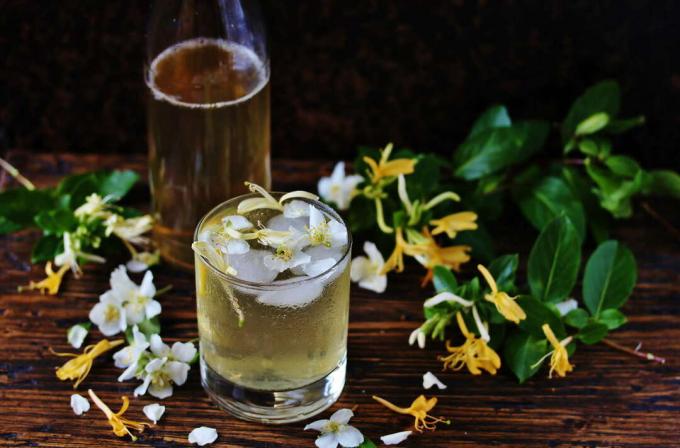
8. wild garlic
The leaves of wild garlic (Allium ursinum) are known to everyone as a spice. But did you know that wild garlic blossoms are also wonderful to eat? The flowers, which taste slightly like onions, are a real insider tip, especially as a seasoning for salads, to flavor fish dishes or as wild garlic vinegar. But be careful when collecting in the forest: there is Risk of confusing wild garlic with lily of the valley.
9. Apple
Of the Apple (penalty) has always been one of the most popular types of fruit. But not only the fruits are a treat for the palate - the delicate flowers of the tree are also ideal for consumption. With a slightly fruity and floral taste, the flowers even enchant the senses. They are particularly popular candied or made into jam or syrup.
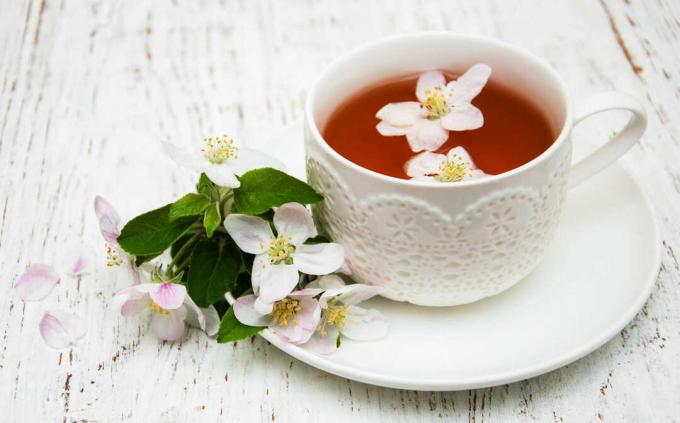
10. lavender
who dem lavender offers a home can look forward to numerous advantages of the plant: Lavender is not only a wonderful eye-catcher, but also as a scented plant famous. At the same time, lavender is considered Plant against mosquitoes and has also proven itself as medicinal plant proven. As if that weren't enough of a good thing, lavender blossoms can also be used excellently in the kitchen: with its With its intense aroma, lavender complements hearty meat dishes in particular, but is also great with sweet desserts process. Real lavender is particularly suitable for consumption (Lavandula angustifolia) – other varieties like the French lavender (Lavandula stoechas) or the spike lavender (Lavandula latifolia) cannot convince with their taste.
11. sunflower
the sunflower (Helianthus annuus) is probably one of the most impressive autumn flowers at all. With an average height of one to two meters and its golden yellow flowers, the imposing flower is also a real eye-catcher. But the sunflower is not only beautiful to look at, it is also ideal for snacking between meals. The best known are the sunflower seeds, which are also very popular with wild animals. But the petals of the plant are not only non-toxic, they can also be used in salads. The sunflower blossoms do not score with an intense taste, but their intense color provides that certain something.
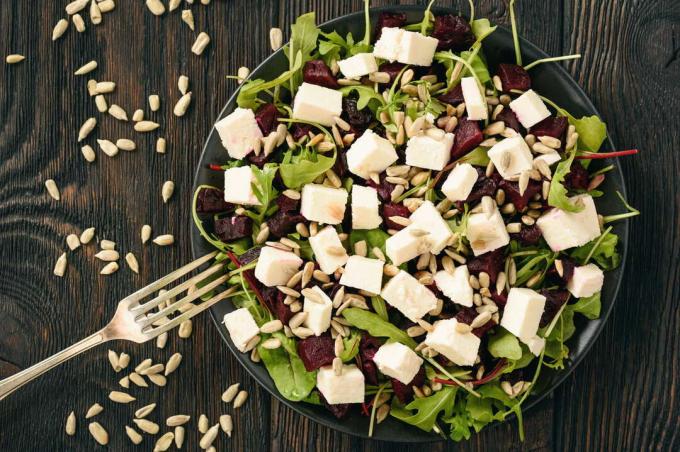
12. roses
The Rose (pink) is considered the queen of flowers - no wonder, after all, it is not only beautiful, but also often enchants our noses with a delicious scent. Roses even cut a fine figure in the kitchen, because they not only look good, they also taste wonderfully intense. But beware: peonies (Paeonia), hollyhocks (Alcea rosea) and christmas roses (Helleborus niger) share the name with the rose, but do not belong to the genus pink and are usually poisonous.
13. Nasturtium
With its bright flowers in summery colors, the Nasturtium (tropaeolum) all eyes on you. But the colorful flowers not only create a good atmosphere in the garden, we can also benefit from the nasturtium in the kitchen: With their spicy-hot taste, the flowers are perfect for salads or as a topping that not only tastes good, but also looks good. The nasturtium is also often used as a substitute for capers: the closed buds are boiled in a broth of vinegar, water and salt, the wrong capers can even stay for months keep.
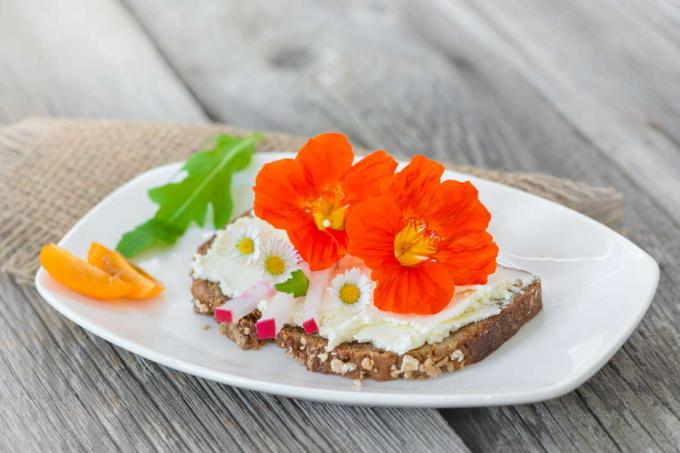
14. dandelion
Of many the dandelion (Taraxacum) is still considered a nuisance weed that is only too happy to show up in the garden. In reality, however, the dandelion is not a troublemaker at all, but can even be seen as a welcoming guest. The reason: actually it is "weed" edible and even very tasty. The leaves of the plant are wonderful in salads and for preparing a soup. But the yellow flower of the dandelion is also ideal for consumption - with its sweet taste taste, it is a great decoration for cakes and tarts, but it can also be used in jelly and jam process.
15. daylilies
Poisonous? Are you kidding me? Are you serious when you say that. The daylily (Hemerocallis) is hardly known to us as an edible flower, but in East Asia the plant has long been a popular guest in the kitchen. The beautiful flowers are even grown there especially for consumption, because their sweet but slightly spicy blossoms are so popular. The daylily blossoms are often used in all kinds of dishes: whether as a salad, rice dish or even ice cream - the daylily goes well with almost every dish.

16. chives
chives (Allium schoenoprasum) is a well-known classic among spices and can be found in most gardens. Its beautiful violet flowers are also a real eye-catcher and a real insider tip in the kitchen: They taste like young chives, but are not quite as intense and spicy. The flowers not only go wonderfully with meat or in a salad, but can also complement desserts.
17. zucchini
A real all-rounder in the bed is the zucchini (Cucurbita pepo var. giromontiina). It not only spoils us in summer with its delicious fruits, it is also a real feast for the eyes with its large yellow flowers. But the zucchini blossom is not only beautiful to look at, but also very tasty and is considered a real delicacy. The flowers are particularly suitable as a supplement to meat and fish, but zucchini flowers with various fillings are also a real treat that you should not miss.

18. borage
Was the borage (Borago officinalis) used to be a popular spice plant, but today it is rarely found in herb beds. That should change - the borage quickly turns out to be a true all-rounder in the bed: fast-growing and undemanding, the plant is also well suited for beginners. At the same time, the borage, with its star-shaped blue flowers and hairy leaves, competes with some magnificent perennials in the garden and is becoming a real eye-catcher. Last but not least, it impresses with its great taste - both leaves and flowers are edible and have a fine cucumber aroma, which is why the plant is also known as cucumber herb.
19. Ice Begonia
the ice begonia (Begonia semperflorens) is a great plant for any garden with its dainty flowers and great colors. But the ice begonia also has a sour, almost citrusy and very fresh taste a real sensation: it is particularly good for sweets or fruity desserts and bowling on. When picking, however, a sure instinct is required - the name "ice begonia" comes from the property of the plant that its leaves can break as quickly as ice.
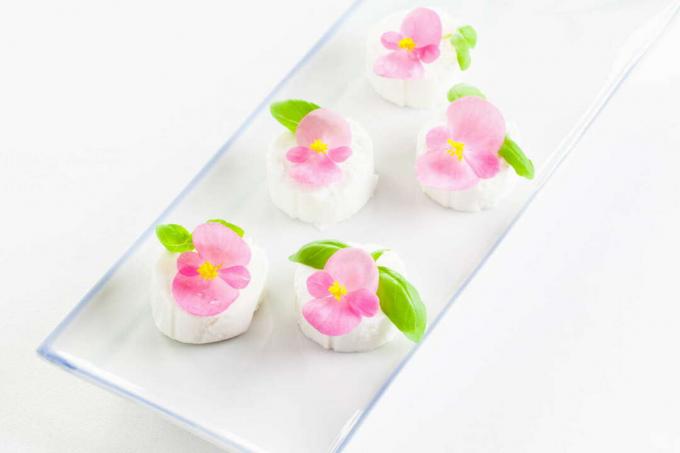
20. violet
Candied violets used to be a popular delicacy - but even today the blossoms of the violet (viola) like to have a snack. Especially the flowers of the sweet violet (Viola odorata) inspire not only with their lovely smell, but also with their mild aroma. They are not only suitable as candied sweets, but can also be combined with salads or even enjoyed on their own. Of course, the violet is also wonderful for the garden or as a balcony plant and is also a real treat for the eyes.
Edible flowers: processing and recipe ideas
Before you taste the delicious edible flowers for the first time, they must of course be prepared first. Important: Only use flowers from your own garden or those that are explicitly sold for consumption. Although you can buy many types of flowers in garden shops or from florists, these have often been treated with pesticides and should therefore not be eaten. Shake the blossoms out briefly, wash them under cold water and pat them dry - this way dirt and crawling animals don't stand a chance. You should then carefully remove the stalks, pistils and clover leaves. In the case of roses, the (often bitter) base of the flower can also be removed.

After that, there are no longer any limits to your imagination: Whether as a salad, with meat or fish, as a dessert or preserved in oil - depending on the variety, the flowers can be used almost anywhere. Blossoms frozen in ice cubes are a great eye-catcher - eating quickly becomes a minor matter.
But not only the flowers of some plants are an eye-catcher on the plate. There are also some edible ground cover – here you will find our top 10.
...and receive concentrated plant knowledge and inspiration directly in your e-mail inbox every Sunday!

